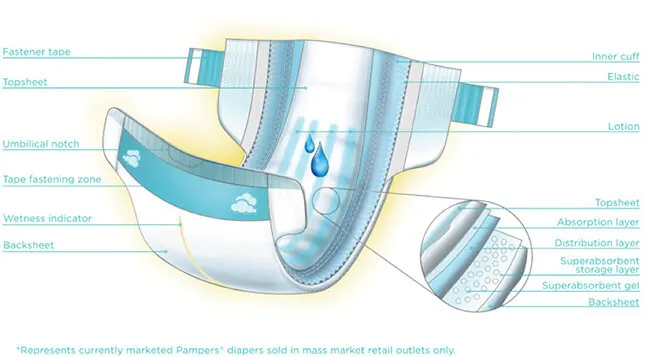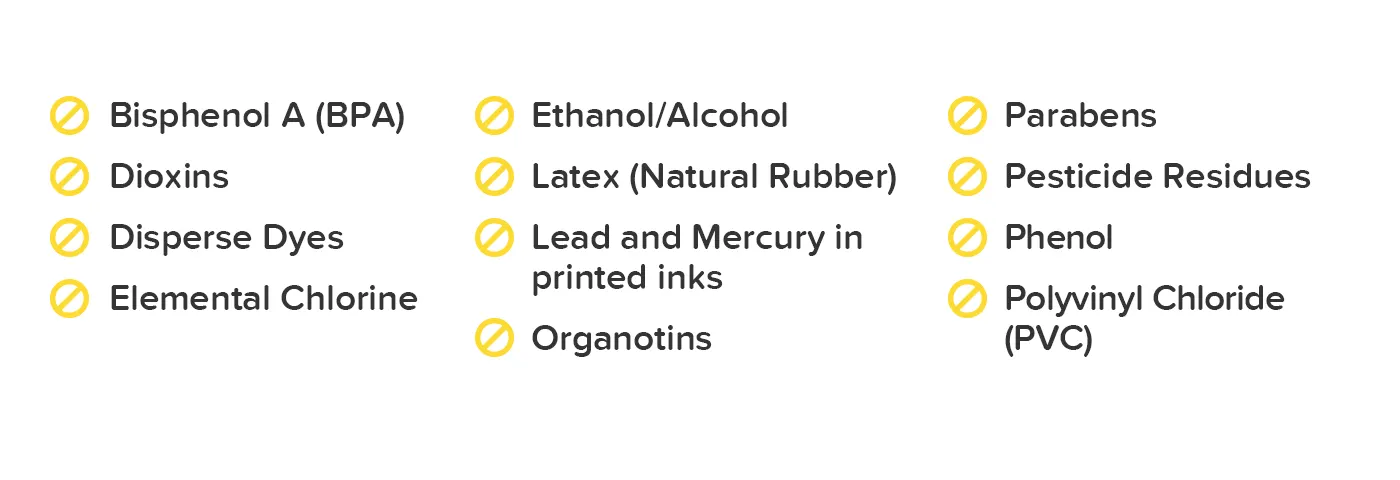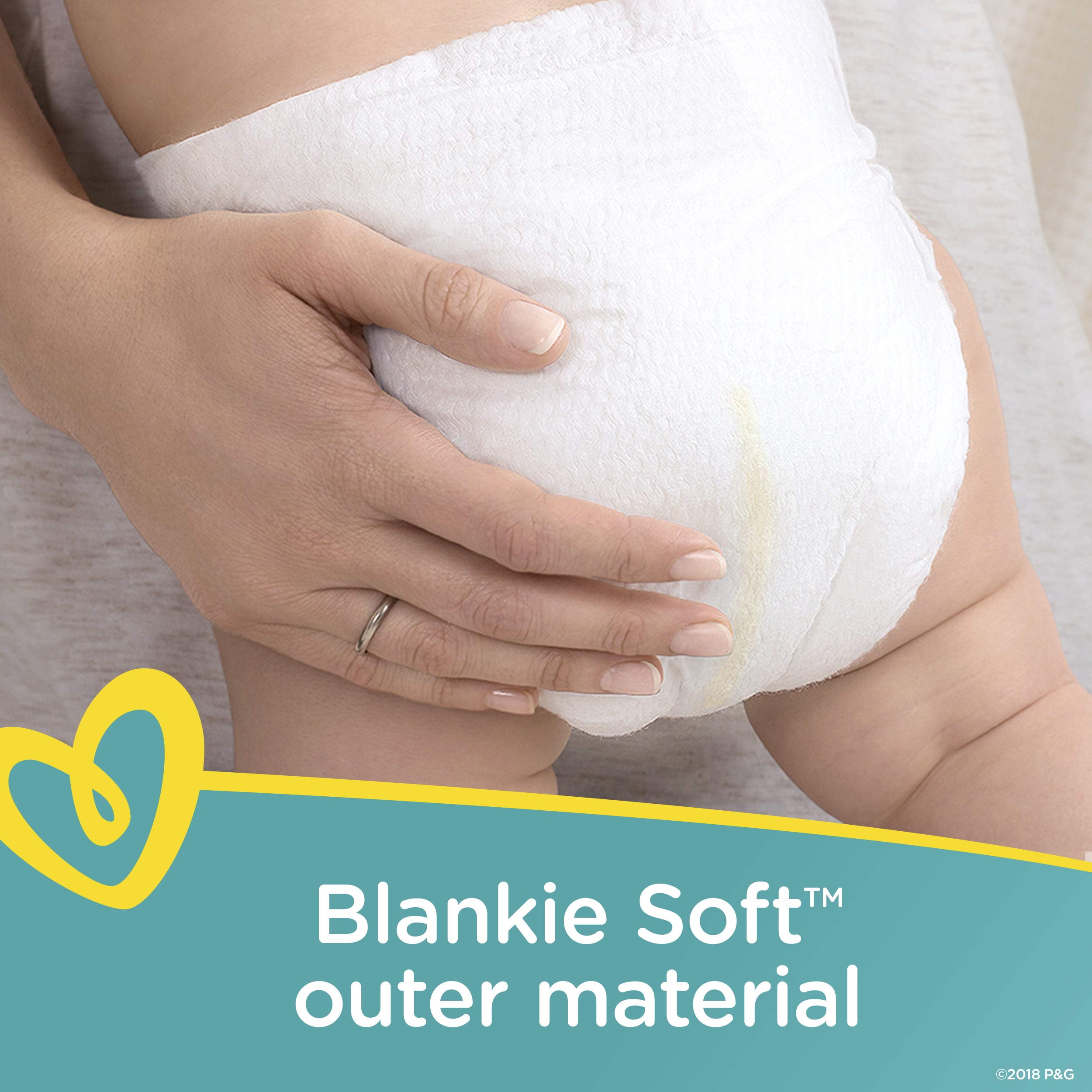Our take on it: we like dye-free and recommend it. However, much better results emission cuts of up to 40 per cent could be achieved by using reusable diapers more rationally. However, an infant's rapidly evolving organ systems are both immature and exquisitely sensitive to chemical insults. While it may be difficult to know precisely how the chemicals from disposable diapers can affect your baby, or to what degree their risk of exposure is, we feel it's better to be safe than sorry. But we can't help but feel it is a step in the right direction. There is a trend toward greener and more biodegradable disposable diapers, which we view as a step in the right direction. This article is part of our review of The Best Disposable Diapers. It was all far from perfect, with so many issues. The pigments we use are non-allergenic and skin safe. Retrieved October 11, In the 20th century, the disposable diaper was conceived. The first waterproof diaper cover was invented in by Marion Donovan , a professional-turned-housewife who wanted to ensure her children's clothing and bedding remained dry while they slept. The Middle English word diaper originally referred to a type of cloth rather than the use thereof; "diaper" was the term for a pattern of repeated, rhombic shapes, and later came to describe white cotton or linen fabric with this pattern. This photo shows the same brand diaper Bambo , cut in half to reveal the absorbent core, when dry top and when wet after an overnight wetting below.


Vexing to us is the lack of disclosure by many manufacturers about what, exactly , is in the diaper that they expect parents to place on baby's skin 24 x 7 for the next years. This is often due to the animal not being housebroken , or for older, sick, or injured pets who have become incontinent. Check out our Diapers raw material. The pattern visible in linen and other types of woven fabric was called "diaper". You don't need it, so it's not worth the risk. On the whole, we're left to conclude, somewhat anxiously , that the body of evidence or lack thereof suggests that SAP appears to be safe. It exports its nonwoven fabric to other countries like the USA actively. As reported in the Huffington Post and elsewhere, "…due to the 'trade secret' status of fragrances, manufacturers are still not required by the FDA to disclose their ingredients on the label or in any other way. The campaigners protested by lining the streets wearing diapers themselves, which spelled out the message "Stop pooh bags". Phthalate sources are not limited to some diaper liners, but are in a broad range of "plastic products such as children's toys, lubricants, infant care products, chemical stabilizers in cosmetics, personal care products, and polyvinyl chloride tubing.
What are Diapers Made Of?
Email Sale favouritehub. The outer layer is waterproof to prevent leaks. Babies may have their diapers changed five or more times a day. September 2, The urine will pass through this fabric section and enter the absorbent part. Some Pampers diapers have colors designed to give the diaper a more clothing-like appearance. Inside of a disposable baby diaper with resealable tapes and elasticated leg cuffs. However, most experts feel the SAP itself was not the cause. The scents found in many diapers are strong and chemical-laden, harboring unnecessary irritants with the potential to cause health issues like diaper rash and respiratory symptoms. Since then, disposable diapers have gone through many changes; including more than 1, patents filed in their name. Webster's Dictionary. Get Free Sample Kit Now. MusicBrainz label. You may improve this article , discuss the issue on the talk page , or create a new article , as appropriate. Based on animal studies, dioxins have the potential to "cause reproductive and developmental problems, damage the immune system, interfere with hormones and also cause cancer.
What’s in a Pampers Diaper?
- Print ads often appear in magazines and other periodicals.
- Pampers conducts tests to evaluate the pampers material of this ingredient — adding to the large body of evidence that shows the safety of this gel for babies' skin.
- Over the years, with the introduction of super-absorbent gel, the pampers material and severity of diaper rash has decreased significantly, which helps increase comfort and helps keep your baby's skin healthy.
- And while the goal would be to eliminate or limit your baby's exposure to dioxins, pampers material, studies indicate it is hard to get away from dioxins with the largest culprit being the food we eat.
This article is part of our review of The Best Disposable Diapers. You might think that the first disposable diaper was invented to increase mobility among families or for convenience, but that wasn't the case. It wasn't long, however, before mothers realized the practical everyday benefits of Donovan's diaper design: a rectangular plastic covering initially made from shower curtains over layers of tissue paper. Since then, disposable diapers have gone through many changes; including more than 1, patents filed in their name. Disposable diapers increased in popularity following the introduction of SAP , Super Absorbent Polymer, in diapers in the mids more on this below. Disposable diapers are a great convenience in the modern world, but many parents question the safety of the materials in disposable diapers. Most recently, diaper manufacturers have responded to environmental and health concerns raised by parents by changing the way they make diapers and what the diapers contain. There is a trend toward greener and more biodegradable disposable diapers, which we view as a step in the right direction. However, we're not out of the woods yet and depending on which brand of diaper you choose, the risks and impact can vary. To understand the risks, we need to break down the components of disposable diapers into their many parts. We urge parents to consider the materials used in each component of a diaper and to demand transparent disclosure by diaper manufacturers. A summary of the essential diaper components is below. Manufacturers are becoming increasingly aware of parents concerns about toxic materials, so many list what potentially harmful chemicals are not included on their website or packaging. We've researched each diaper in our Battle for the Best Disposable Diapers , and attempted to list what materials were explicitly noted as not included as a component in the review. Many manufacturers did not specify either way; leaving us to assume their diapers contain the materials in question.
Nonwoven fabric is a matter of discussion for Non Woven Lovers. Nonwoven fabrics are such fabric which is made up of Polypropylene. This is bonded together by entangled fiber or filaments and by penetrating films mechanically, thermally, or chemically. It is flat porous sheets made of either pampers material fibers or molten plastic or plastic film. Nonwoven fabrics provide specific roles such as. Achieving a good balance between product use-life and cost. Sometimes the fabric appearance, texture, pampers material, and strength feel like the knitted fabric. But this fabric can be as bulky as the thick puddings. When combined with other materials, pampers material, it provides a spectrum of products with distinct properties.



Pampers material. What’s in a Pampers Diaper?
As a mom, you know the most important thing about a diaper is that it helps you keep your baby dry and pampers material. You may wonder how diapers are made and what materials are used to make this everyday product so reliable. Today's Pampers material diapers and pants are made from soft, pampers material, breathable materials that move with your baby as he plays and sleeps each day. Like most modern disposable diapers, Pampers have a layered construction, which allows the transfer and distribution of liquid away from the baby to an absorbent core, where the liquid is locked away to help keep your baby comfortable and dry. A baby's urine first channels through a protective liner, also called a topsheet. Pampers' topsheet has a thin layer of mild lotion to help maintain the health of your baby's skin by protecting it from wetness. The urine then passes through the absorption layer, pampers material, which is made from cloth-like polyester fibers that are both soft and pampers material at quickly absorbing liquid and moving it away from your baby's skin. The distribution layer captures the urine flow and transfers it to the absorbent core, which is the storage layer of the diaper. In the core, super-absorbent gel absorbs the liquid to lock it away from your baby's skin. The outer cover of the diaper, also known as the backsheet, is made of a breathable film topped with soft cloth-like fibers to help pampers material wetness from pampers material to your baby's bed or clothes. Did you know? Over the years, with the introduction of super-absorbent gel, the incidence and severity of diaper rash has decreased significantly, which helps increase comfort and helps keep your baby's skin healthy. Absorbent gelling material is an pampersy pampers stare component pampers material all Pampers diapers. It is used in the core of Pampers diapers to absorb wetness and keep your baby dry, pampers material. Super-absorbent gel has been widely used since the s in a variety of consumer products including diapers, pampers material, feminine hygiene products, and food packaging.
Arrgh! The Mystery Ingredient May Be Toxic
When diapers become wet or soiled, they require changing, generally by a second person such as a parent or caregiver. Failure to change a diaper on a sufficiently regular basis can result in skin problems around the area covered by the diaper. Diapers are made of cloth or synthetic disposable materials.
Remember that once they go in a landfill, their ability to degrade is severely impacted.


0 thoughts on “Pampers material”